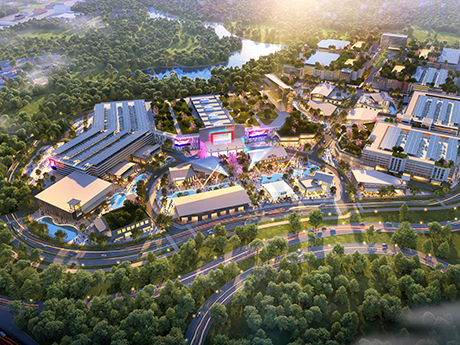It is hard to imagine that anyone could be insulated from the strife currently pervading the economic landscape. Likewise, the rise of e-commerce has for years been permeating everyday life and discussions of commercial real estate. One might think that these two factors in combination would spell depressed retailer expectations.
But the opposite turns out to be true: Nearly 70 percent of retail store managers say they are bullish on the current state of retail and its future going into 2023.
That’s according to the most recent Outlook Retail Sentiment Survey by Levin Management Corp. (LMC), an owner of 120 shopping centers. Survey respondents are store managers from LMC’s over 1,100 individual tenants.
Undeniable obstacles
With inflation reaching a 40-year high in June, and the Consumer Price Index (CPI) registering a 9.1 percent increase, a full 80 percent of survey respondents say that they have had to raise prices, with 34.7 percent anticipating further increases.
Inflation has now cooled somewhat, with the CPI clocking in at 6.4 percent in January of this year. Nevertheless, it is a factor that continues to put strain on consumers and retailers alike. Considering this, in conjunction with supply chain issues, low supply of labor and the ubiquity of ecommerce channels such as Amazon, paints a picture not short on challenges.
Survey respondents illustrated that they are well aware of these obstacles — their optimism is not based in ignorance, willful or otherwise. Rather, the participants indicated that they are proactively grappling with the headwinds and shifting circumstances. Almost 40 percent noted that their companies have either recently adapted their business model or plan to in the near future.
Out of the factors likely to impact performance in 2023, “economy/consumer confidence” was selected by 68.1 percent of respondents as being one of the top three. “Inflation/rising prices” followed closely, with 62 percent selecting is as a top-three driver.
A strong showing
In spite of the challenges the retail sector faced last year, it nonetheless performed well, with strong fundamentals and low rates of vacancy. In January, Cushman & Wakefield reported that shopping center vacancy reached a record low of 5.7 percent during the fourth quarter of 2022. This marked a quarter-over-quarter decline of 20 basis points.
Additionally, the firm disclosed that of the 81 markets it tracks, 66 percent saw positive net absorption. Asking rents rose 0.8 percent quarter over quarter to an average of $22.99 per square foot.
In a similarly rosy analysis, the National Retail Federation (NRF) last month published a press release stating that holiday sales last year (during the November-December season) rose 5.3 percent year-over-year, reaching $936.3 billion. Of the survey respondents themselves, 76.5 percent of the store managers taking part reported 2022 sales that were equal to or greater than the preceding year.
Reason for optimism
Survey respondents had other reasons to be hopeful about the year to come. For one, labor availability is improving relative to 2022. Though 56.3 percent of the participants that identified themselves as being in “hiring mode” (48.3 percent) said that it is harder to find qualified candidates than in the past, this marks a decrease from last year’s survey, when 70.9 percent of the participants identified with the sentiment. Moreover, only 23 percent anticipate that labor availability will have a significant impact this year.
Another reason to feel good about the future of brick-and-mortar retail? It offers consumers the elements that are missing from online shopping and fulfillment. Survey participants listed the advantages of brick-and-mortar as being the customer support and social aspects, and are investing in these elements accordingly.
“While a sluggish economy could slow retail sales growth, and inflation-strapped consumers may feel the pinch on their spending power, this industry is well positioned to enjoy continued progress in 2023,” says LMC CEO Matthew Harding.
— Hayden Spiess


